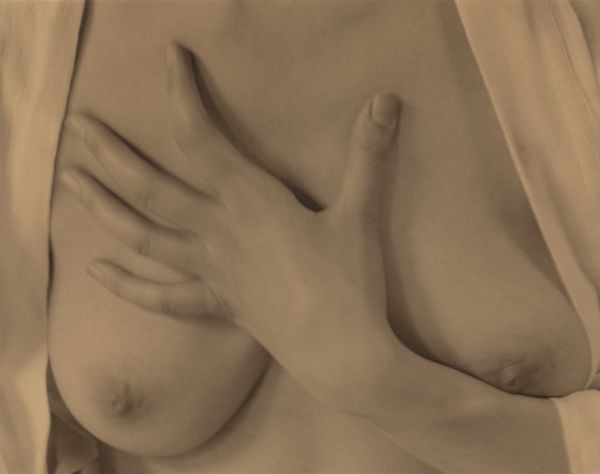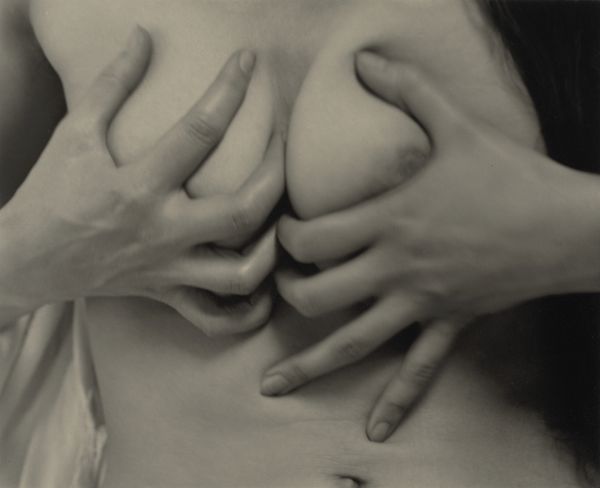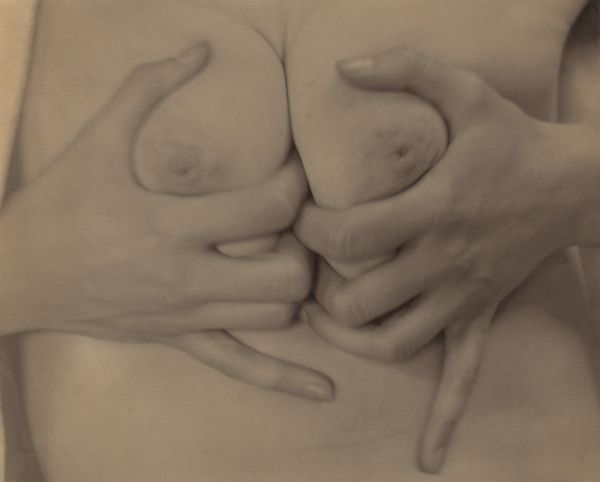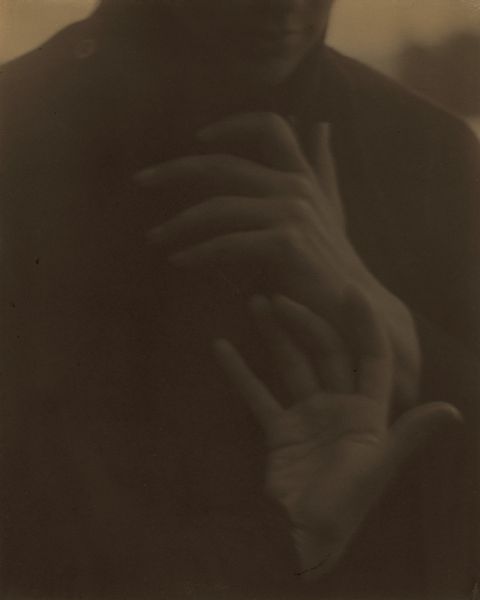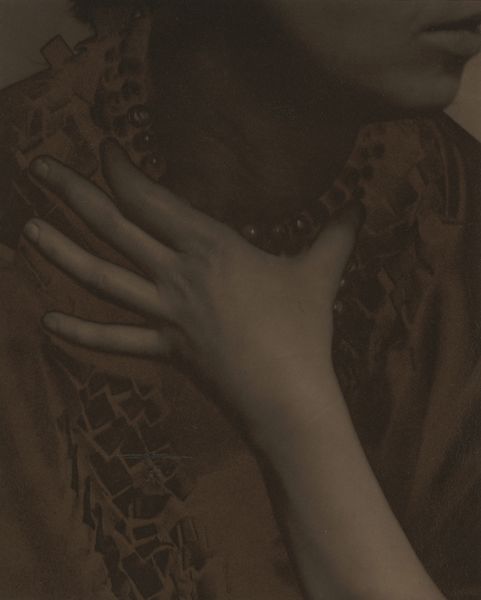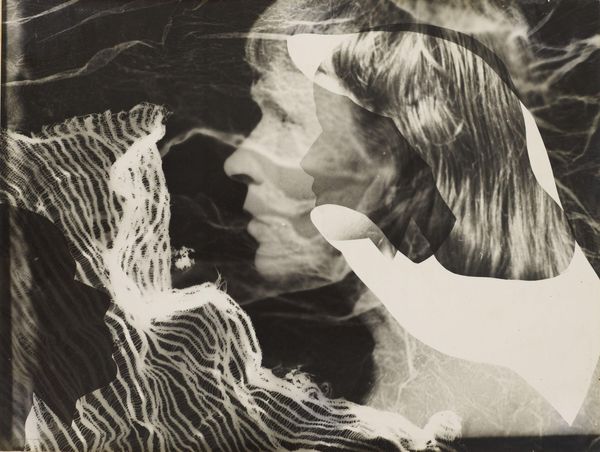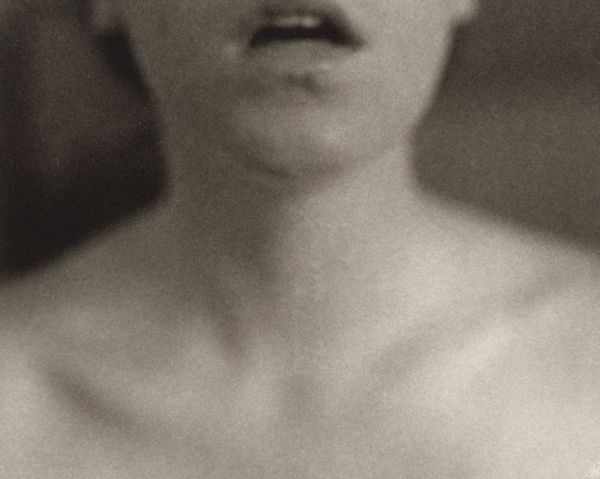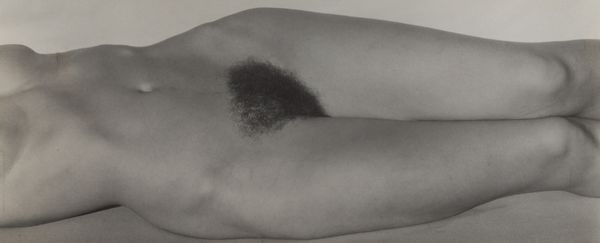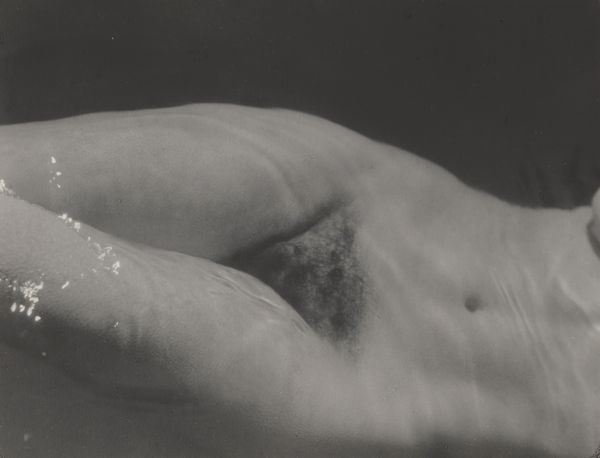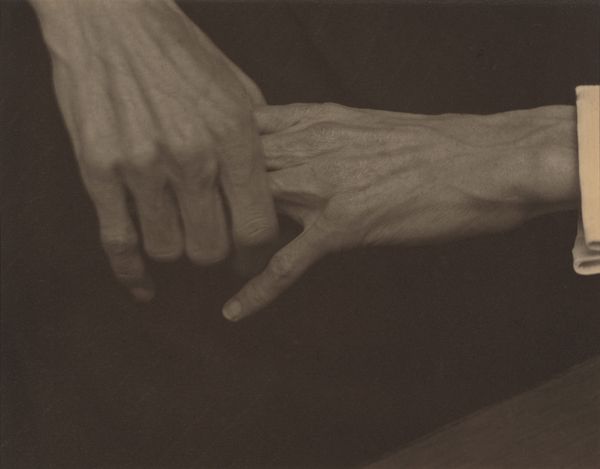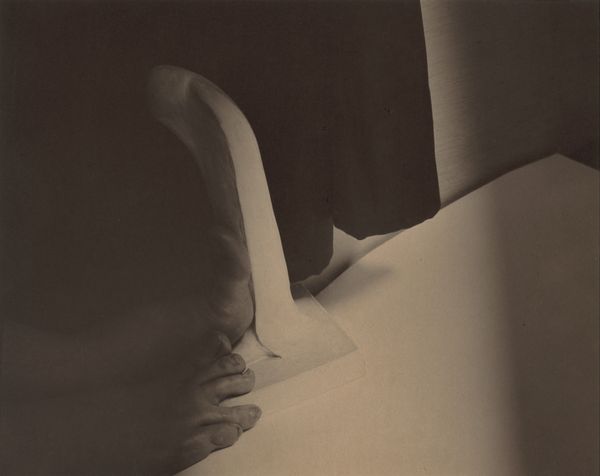
paper, photography
#
portrait
#
self-portrait
#
pictorialism
#
portrait
#
paper
#
photography
#
modernism
Dimensions: 24.2 × 19.4 cm (image); 25.3 × 20.2 cm (paper); 48.3 × 38.4 cm (mount)
Copyright: Public Domain
Editor: So, here we have Alfred Stieglitz's photograph "Georgia O'Keeffe—Neck" from 1921, housed here at the Art Institute of Chicago. It’s striking how vulnerable and intimate it feels, focusing on this very specific part of her body. How do you read this work? Curator: I'm immediately drawn to the tangible quality achieved through the photographic process. Consider the paper itself, likely a silver gelatin print. Stieglitz's mastery highlights not only the form of O’Keeffe’s neck and shoulders, but it exposes the social and economic contexts around the commodification and representation of the body itself. The hands framing the image... what labour do you imagine those hands doing? Editor: I hadn’t really thought about the labor! My first impression was the sensuality of the curves, especially contrasting with the angles of her collarbones. It's so simplified. Curator: Precisely. Look closer. It isn’t just simplified—it's about Stieglitz’s own craft, his own act of framing and controlling how we *consume* O’Keeffe’s image. Consider also, how modernism sought to elevate the ordinary to high art. Does that alter your initial interpretation? Editor: That shifts things, definitely. I was so focused on O'Keeffe, but it's really about Stieglitz’s agency and the manipulation of his subject’s body into an artistic commodity. Curator: And think about the role of photography in shaping perceptions, particularly of women, at that time. The "straight photography" movement prized unmanipulated images but even within that context, choices of framing, lighting and ultimately selection contribute to a particular construction. Editor: I see what you mean. It's easy to get caught up in the aesthetic, but the power dynamics at play are really important. It’s not just a pretty picture, it's part of a bigger system. Thanks, that gives me a lot to think about! Curator: Indeed! Seeing beyond the surface and questioning the means of production brings a new layer to the appreciation of this work.
Comments
No comments
Be the first to comment and join the conversation on the ultimate creative platform.
